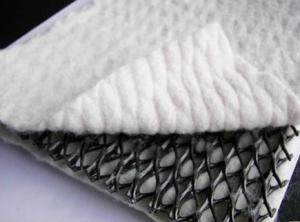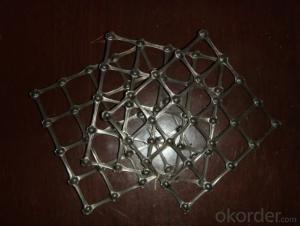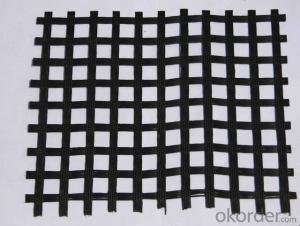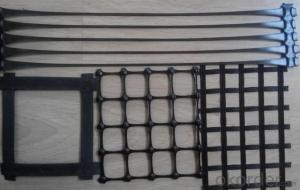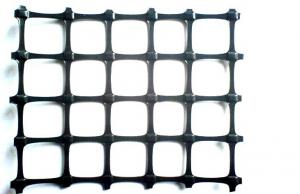Geocomposite Geomembrane for Rock fill
- Loading Port:
- Tianjin
- Payment Terms:
- TT or LC
- Min Order Qty:
- 1000 m²
- Supply Capability:
- 1900000 m²/month
OKorder Service Pledge
OKorder Financial Service
You Might Also Like
The description of Geocomposite Geomembrane for Rock fill dam and transportation tunnel
Made by non woven geotextile and PE/PVC geomembrane. Categories are including geotextile and geomembrane, geomembrane with non woven geotextile on both sides, non woven geotex-tile with geomembrane on both sides, multi-layer geotextile and geomembrane.

Specification of eocomposite Geomembrane for Rock fill dam and transportation tunnel:
L. One geotextile and one geotextile, geotextile: 100 - 800g/m', geomembrane O. 1-I. Omm.
2. Geomembrane with geotextile on both sides: Geotextile 100 - 400G/M2; Geomembrane: 0.2 - l. Omm
3. Geotextile with geomembrane on both sides: Geotextile 100 - 800G/M2; Geomembrane: 0.1- 0.8mm
Features or Property of Geocomposite Geomembrane for Rock fill dam and transportation tunnel:
L. Good flexibility
2. Separation, reinforcement and protection
3. Waterproofing
Application of Geocomposite Geomembrane for Rock fill dam and transportation tunnel:
L. Reinforcement in channel
2. Embankment, reservoir
3. Waterproofing in reservoir
4. Rock fill dam and transportation tunnel
Production Standard of Geocomposite Geomembrane for Rock fill dam and transportation tunnel:
GB/T17642-2008
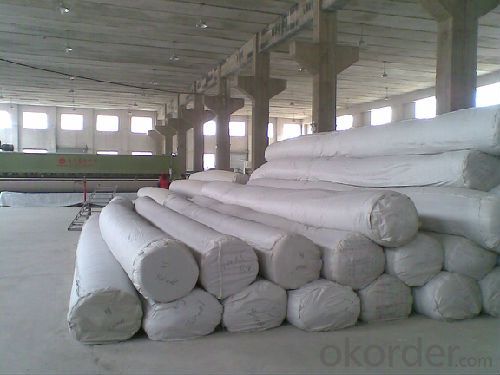
Area |
|
Hydraulic | Lagooning and Water Treatment, Ornamental Ponds, Golf Courses Aquaculture and Desalination Water LagoonsTanks, Reservoirs, Liquid WasteFloating Cover SolutionsDrainage and FiltrationShading Cover Solutions |
Environment | Tailing ponds, Leach mining,Landfills,Landfill Capping,Protection against corrosion,Vertical Barriers |
- Q:Can geogrids be used in reinforced concrete structures?
- Yes, geogrids can be used in reinforced concrete structures. Geogrids are commonly used as a reinforcement material in various construction applications, including concrete structures. They are typically used to enhance the structural integrity, stability, and load-bearing capacity of the concrete by providing additional tensile strength and reducing cracking. Geogrids are especially effective in applications where soil conditions are poor or unstable, as they help to distribute loads and prevent soil movement or settlement.
- Q:What is the difference between woven and non-woven geogrids?
- Woven geogrids are made by weaving individual yarns together, creating a grid-like structure. Non-woven geogrids, on the other hand, are manufactured by bonding or interlocking fibers together through mechanical, thermal, or chemical processes. The key difference is in the manufacturing process, which results in woven geogrids being stronger and more rigid, while non-woven geogrids tend to be more flexible and have higher tensile strength. Additionally, woven geogrids are generally used in applications that require high load-bearing capacity, while non-woven geogrids are often used for soil stabilization and separation purposes.
- Q:Can geogrids be used in reinforcement of underground tunnels and caverns?
- Yes, geogrids can be used in the reinforcement of underground tunnels and caverns. Geogrids are high-strength materials that can provide stability and support to the surrounding soil or rock mass in underground structures. They can be used to reinforce the tunnel walls, prevent ground movement, and increase the overall strength of the tunnel structure. Geogrids are commonly used in geotechnical engineering projects to enhance the stability and longevity of underground tunnels and caverns.
- Q:How do geogrids improve the performance of geosynthetic drainage systems?
- Geogrids improve the performance of geosynthetic drainage systems by providing additional structural support and stability. They enhance the load-bearing capacity of the system, preventing soil erosion and promoting effective water flow. Geogrids also distribute the weight evenly across the system, reducing the risk of localized failures and improving long-term durability.
- Q:How much is the steel plastic geogrid?
- The steel plastic geogrid is also called the steel plastic grille, the steel plastic composite geogrid, a lot of also called the plastic steel grille (a kind of misreading), is a kind of geogrid. The price of steel plastic geogrid is divided according to the model, the model of steel plastic geogrid has 30KN, 40KN, 50KN, 60KN, 70KN, and so on, the maximum can reach 150KN. Commonly used models of steel plastic geogrid prices are as follows:
- Q:Are geogrids suitable for reinforcing landfill liners?
- Yes, geogrids are suitable for reinforcing landfill liners. Geogrids are commonly used in landfill construction to enhance the stability and strength of liners, preventing soil erosion and improving overall performance. They provide additional reinforcement to the liner system, enhancing its durability and longevity. Geogrids also help to distribute loads and reduce settlement, ensuring the integrity of the landfill liner.
- Q:How do geogrids improve the stability of channel linings?
- Geogrids improve the stability of channel linings by providing reinforcement and confinement to the soil or aggregate materials used in their construction. The geogrids act as a reinforcement element by distributing the tensile forces within the soil or aggregate, preventing excessive deformation and maintaining the integrity of the channel lining. Additionally, geogrids restrict lateral movement of the soil or aggregate, thereby enhancing the overall stability and preventing erosion or failure of the channel lining.
- Q:How do geogrids affect soil compaction?
- Geogrids can positively affect soil compaction by providing reinforcement and stability to the soil, reducing the potential for settlement. They distribute the applied load more evenly, improving the load-bearing capacity of the soil and reducing the chances of soil movement or deformation.
- Q:How do geogrids reinforce slopes?
- Geogrids reinforce slopes by providing additional support and stability to the soil. They are typically made of high-strength materials, such as polyester or polypropylene, and are installed within the soil layers to enhance their strength. The geogrids act as a barrier, preventing soil movement and erosion, while distributing the forces exerted on the slope more evenly. This reinforcement technique helps to prevent slope failures and increases the overall stability of the slope.
- Q:What is the effect of installation damage on geogrid performance in long-term applications?
- The effect of installation damage on geogrid performance in long-term applications can be detrimental. Installation damage, such as punctures, tears, or stretching, can weaken the geogrid's structural integrity and reduce its ability to provide long-term reinforcement. This can lead to decreased stability, reduced load-bearing capacity, and potential failure of the geogrid system over time. Therefore, it is crucial to handle and install geogrids carefully to minimize any damage and ensure optimal performance in long-term applications.
1. Manufacturer Overview |
|
|---|---|
| Location | |
| Year Established | |
| Annual Output Value | |
| Main Markets | |
| Company Certifications | |
2. Manufacturer Certificates |
|
|---|---|
| a) Certification Name | |
| Range | |
| Reference | |
| Validity Period | |
3. Manufacturer Capability |
|
|---|---|
| a)Trade Capacity | |
| Nearest Port | |
| Export Percentage | |
| No.of Employees in Trade Department | |
| Language Spoken: | |
| b)Factory Information | |
| Factory Size: | |
| No. of Production Lines | |
| Contract Manufacturing | |
| Product Price Range | |
Send your message to us
Geocomposite Geomembrane for Rock fill
- Loading Port:
- Tianjin
- Payment Terms:
- TT or LC
- Min Order Qty:
- 1000 m²
- Supply Capability:
- 1900000 m²/month
OKorder Service Pledge
OKorder Financial Service
Similar products
New products
Hot products
Hot Searches
Related keywords
